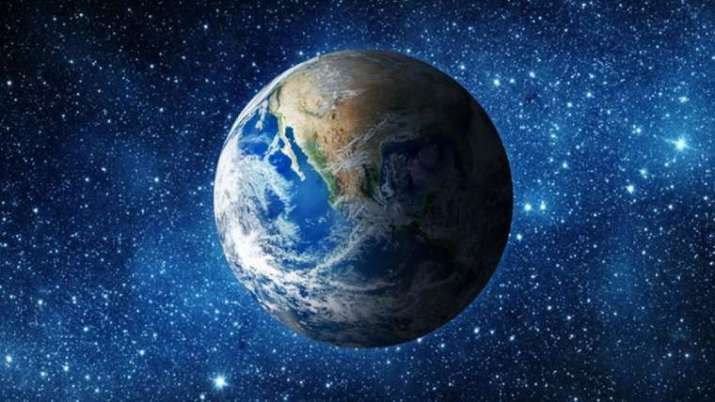
That [we] do not learn very much from the lessons of history is the most important of all the lessons that history has to teach. — Aldous Huxley
And so we find ourselves in the timeless and endless cycle of samsara with no clear exit strategy. Here is that exit strategy:
The term bodhimandala traditionally refers to the place where a buddha attains enlightenment. Although it is much less commonly used than the term mandala (67 thousand Google results versus 207 million), it has some important meanings that resonate more broadly than the more abbreviated term.
Broadly speaking, the outer meaning of a bodhimandala is a sacred place to Buddhists. Bodh Gaya, Swayambhu, Kailash, Wutai, Shwedagon, Borobudur, and the Potala are examples. Any sangharama or temple can be a bodhimandala. The inner meaning is revealed by the way architecture or practice in these places recreates Buddhist cosmology. The secret meaning is revealed when we carry the bodhimandala perspective into our everyday lives.
Peter Herschock, author of “Built Space as Bodhimandala: The Architectural Meaning of a Practised Buddhism,” parts 1 and 2, in the Architectural Theory Review (1999), explores the inner meaning and expands his exploration into the secret meaning in his book Valuing Diversity: Buddhist Reflection on Realizing a More Equitable Global Future (SUNY Press 2014).
In the Great Compassion Repentance Ritual, we recite: “The worshipped and the worshipper are empty and still in nature. The response and the way are intertwined, inconceivably. This bodhimandala of mine is like a wish-fulfilling pearl; the buddhas appear before me, and I appear before the buddhas. Bowing down, I return my life in worship.”
I have always found this particular passage profoundly moving, and it is part of the bedrock for my environmental activism. Consider: if it is part of every bodhisattva’s vow to create a Pure Land, when does that start? Here and now, obviously. This very saha world is our bodhimandala. (If you are interested, Vimalakirti gives Glorious Light Bodhisattva a more detailed description of the constituents of a bodhimandala in the Vimalakirti Nirdesa Sutra.)
Back in 2007, the Buddhist Channel website launched an international program to fund 10 Buddhist social action groups. The program website, bodhimandala.net, now defunct, ran for several years and can still be found on the Internet Archive’s Wayback Machine. Following the links there quickly reveals a plethora of amazing organizations with many inspiring ideas for action, largely in the arena of social justice.
Since that time, environmental issues have moved from the margins to the central focus of global attention. Rather than ameliorating conditions for those in need, there has been a value shift toward the more fundamental issue of survival. Buddhists have been behind the curve in rallying to the cause, and I have yet to see more than a few Buddhist organizations that have progressed from endorsement to active campaigns.
Buddhism places emphasis on intention, but implicit in that is the need to clarify our underlying values. Herschock makes a distinction between problems for which there are logical solutions, and predicaments, which come from clashes of values and solutions for which require a fundamental embrace of diversity in our relationships. From that perspective, the novel coronavirus is a problem, while the recent electoral process in the United States is a predicament.
I’d venture to say that Buddhists are as aware as anybody else of the predicaments we face. Buddhism’s understanding of interdependence could be a great place to begin that reorientation. To do so, however, Buddhists must fully embrace our little blue planet as the bodhimandala, with what His Holiness the Dalai Lama refers to as “Universal Responsibility.”
Bryan Norton, a well-known ecologist coming at it from a secular perspective, concurs that the solutions to our predicaments will not come from fixed, utopian objectives, but will instead be achieved through experimentation, incremental learning, and adaptive management. In other words, the way forward is through a new focus on process rather than perpetuating what has proven to be a paradigm for large social structures that is no longer workable.
The prospect of a more volatile future is a likely consequence as more people are pushed to their limits. The pandemic is only an opening act. The dilemma, as I see it, is that people and organizations who have a selfish and/or short-sighted interest in maintaining the status quo are not going to invest in the kind of change that will involve sacrificing some of their privilege for the greater good.
Earth, water, fire, and air are the four elements symbolized in Buddhist stupas—as Lama Anagarika Govinda described in his book Psycho-Cosmic Symbolism of the Buddhist Stupa (Dharma Publishing 1976)—as well as in many indigenous spiritual traditions. It should not be foreign to us to respect and care for them, and yet somehow we have lost our groundedness in the Earth, our indebtedness. Thought leaders such as Tom and Kitty Stoner (NatureSacred), Richard Louv (Nature Deficit Disorder), and Naomi Klein (This Changes Everything) have shown a variety of paths to a new way of framing our challenges, but there is a lot of resistance.

Nichidatsu Fujii, founder of the Nipponzan-Myohoji Buddhist Order, has inspired Buddhists to construct more than 80 Peace Pagodas around the world. Dilgo Khyentse Rinpoche and Dzongsar Jamyang Khyentse Rinpoche, founders of the Peace Vase Project, have inspired Buddhists to plant more than 3,300 Peace Vases around the world. Goi Sensei, founder of the May Peace Prevail on Earth movement, has inspired the installation of more than 250,000 Peace Poles around the world. Where is the Buddhist leader who will capture the public imagination to focus on environmental issues with the same dynamism?
I recently read Ecology, Ethics and Interdependence: The Dalai Lama in Conversation with Leading Thinkers on Climate Change, edited by John Dunne and Daniel Goleman (Wisdom Publications 2018). A host of Buddhist luminaries took part in the discussions, and I was excited by the prospect of reading it, but the book left me feeling discouraged at the tentativeness and vagueness of their comments. If this is the best that Buddhism has to offer, we are in a bad way, folks. We can’t expect David Loy, Stephanie Kaza, and Joanna Macy to carry the burden for us all.
Consider the freshwater crisis as just one example.
Josephine Mandamin, a grandmother water walker in the Anishnaabe Nation in Ontario, Canada, has walked more than 20,000 kilometers to promote water awareness. Her 13-year-old niece, Autumn Peltier, an internationally recognized environmentalist from the Wikwemikong First Nation, has addressed the Canadian government and the United Nations on water issues. In the United States, aboriginal water keepers from the Sioux tribe galvanized the world at Standing Rock with their efforts to protect their freshwater resources from an oil pipeline. In Western Canada, aboriginal communities are at the forefront of the fight to stop the Transmountain Pipeline. Brazil’s indigenous communities are similarly at the forefront of trying to protect the Amazon River watershed from logging, mining, and other forms of attack from the country’s right-wing government.
It is commendable that indigenous leaders have become our saviors in the fight to preserve and protect our freshwater resources, and that they have inspired many allies. More power to them. And how have Buddhists stepped up?
In 2013, Soto Zen teacher Shodo Spring led a four-month “Compassionate Earth Walk” along the route of the Keystone XL Pipeline. In 2017, Buddhist nun Jun Yasuda from the Grafton Peace Pagoda led a 90-mile “Water Walk for Life” in protest over the Pilgrim Pipeline.
And how about environmental issues in general?
His Holiness the Karmapa founded the Khoryug Movement to promote environmental initiatives, but other than an annual conference, it does not reveal much on its website. Mlup Baitong (a Cambodian NGO), the “ecology monks” of Thailand (dating back to Phrakhru Pitak Nanthakun’s groundbreaking initiatives in 1975), the Bhutan Trust for Environmental Conservation, and The Small Earth Nepal have all been active in environmental issues, but their initiatives remain very local.
A search of the Asia-Pacific Water Forum website and publications for the keyword “Buddhist” reveals zero results. Nothing from The Water Project’s website either. Ditto for Friends of Nature, China’s oldest registered NGO. Ditto for the UN Global Analysis and Assessment of Sanitation and Drinking Water. In other words, while there have been Buddhist initiatives, they remain in silos, unintegrated with secular initiatives.
The Forum on Religion and Ecology at Yale has a selection of climate change statements from spokespeople from world religions. Follow the link below to read the nine Buddhist statements (2003–16). The site also contains an extensive bibliography of publications relating to Buddhism and ecology, compiled by Duncan Ryuken Williams. The journal Religion has an interesting article from 2019 titled: “Environmental Revolution in Contemporary Buddhism: The Interbeing of Individual and Collective Consciousness in Ecology.”
Well, then, what’s an environmentally conscious Bodhisattva to do, beyond small personal changes? Three excellent air quality initiatives might be to plant trees, rewild your temple lawn, and do whatever you can to reduce your center’s carbon footprint. If you have a retreat centre, you might also consider deeding the property to a wild land trust instead of selling it if you no longer have need of it.
Does your Dharma centre have and display a comprehensive environmental policy document? If so, you are in the minority! Have you actively sought connection with the EcoDharma Centre, One Earth Sangha, or another Buddhist organization that puts environmental activism at the centre of their practice? They have so much to offer!
And of course, there are a variety of interfaith organizations dedicated to fighting climate change. The Canadian Association of Engaged Buddhists, for example, is a member of the Canadian Climate Action Network, along with more than 100 other organizations. Imagine the synergy!
So that is, I believe, the appropriate Buddhist response to what we make of the lessons of history: to step outside the normative paralysis of samsara. This blue pearl of ours can be the wish-fulfilling pearl—the bodhimandala.
This series of 12 articles about Green Buddhism is adapted from topics in Bodhisattva 4.0: A Primer for Engaged Buddhists.
References
Herschock, Peter. 2014. Valuing Diversity: Buddhist Reflection on Realizing a More Equitable Global Future. Albany, NY: SUNY Press.
Kaza, Stephanie. 2019. Green Buddhism: Practice and Compassionate Action in Uncertain Times. Boulder, CO: Shambhala Publications,.
Keddy, Paul. 2020. Darwin Meets the Buddha: Human Nature, Buddha Nature, Wild Nature. Manotick, ON: The Sumeru Press,.
Loy, David. 2019. Ecodharma: Buddhist Teachings for the Ecological Crisis. Boston, MA: Wisdom Publications.
See more
EcoBuddhism
David Loy
One Earth Sangha
Compassionate Earth
Green Faith
Khoryug
Bodhimandala (web archive)
Yale Forum on Religion and Ecology
Interfaith Environmental Network
The Interfaith Center for Sustainable Development
Interfaith Power and Light
Climate Action Network
Parliament of the World’s Religions Climate Action












